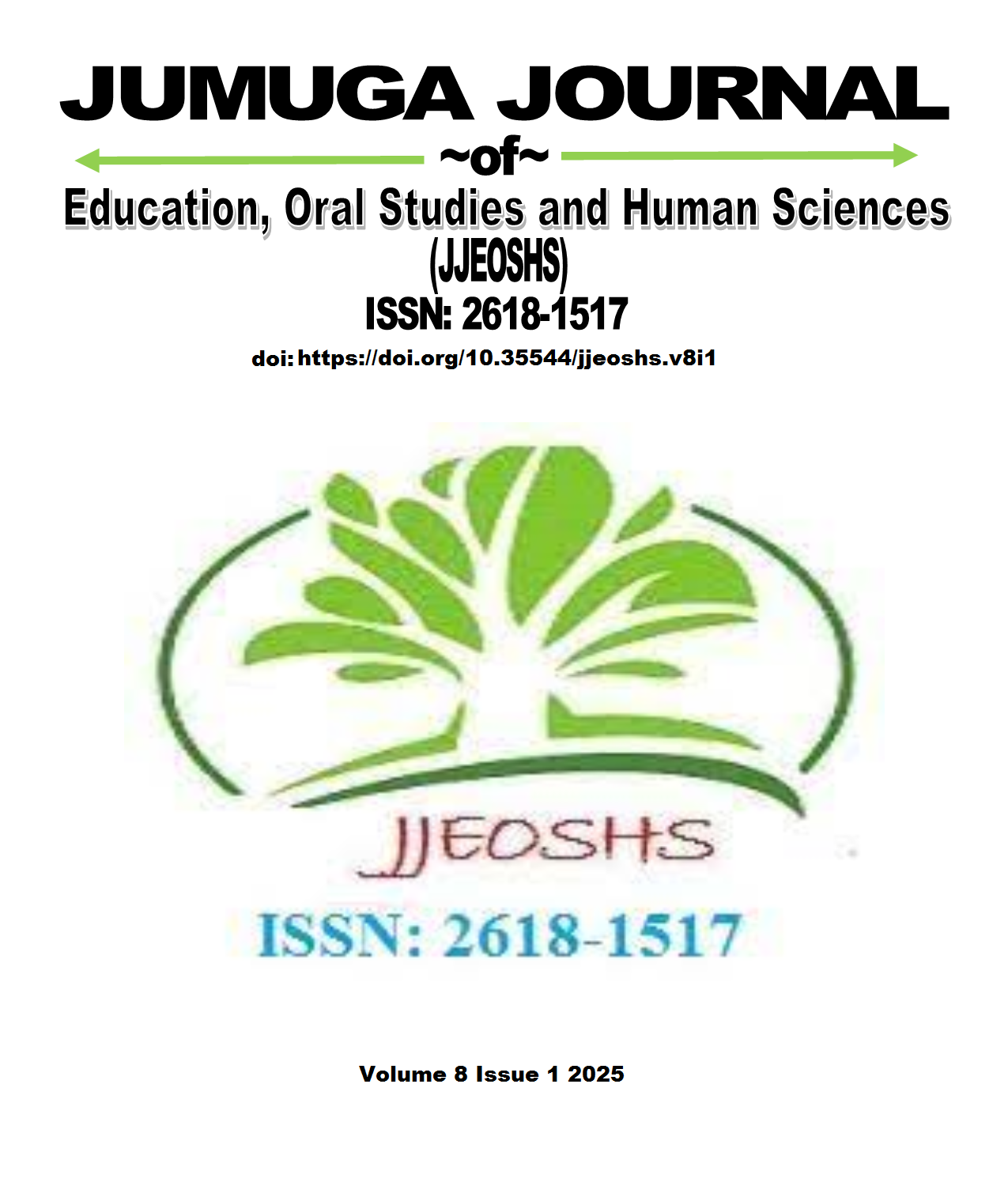Mathematics Education & Some Methodological Considerations
A brief survey with reference to Pupils in Katete District, Eastern province, Zambia
DOI:
https://doi.org/10.35544/jjeoshs.v8i118Keywords:
Circle theorems, Concrete-representational-abstract, Instructional Approach, Traditional approach, PerformanceAbstract
The research article seeks to determine the casual difference in performance in Circle Theorems when in concert with Concrete-Representational-Abstract (CRA) Instructional Approach. As a conventional method of instruction on Grade 11 pupils, the latter is compared with the traditional method of instruction in Mathematics education. In turn, Circle Theorems (CT) are viewed as properties that display relationships between angles within the geometry of a circle; and includes: Chord circle theorem, Tangent circle theorem, Cyclic quadrilateral circle theorem, Angle in a semi-circle theorem, Alternate segment circle theorem, Angle at the centre circle theorem and Angles in the segment circle theorem. The latter is not the main concern of this treatise. It conceptualises education as the process which does an all-round harmonious development of the individual to modify behaviour, attitude and thinking – all in its endeavour to investigate the effect of using Concrete– Representation–Abstract (CRA) Instructional Approach on Grade 11 pupils’ performance in circle theorems in the Katete District, Eastern province, Zambia. It its methodology and design, it utilises descriptive statistics design; as the researchers used the difference-in-differences methods to assess the impact of the interventions on pupil performance. Overall, it establishes that there was a significant difference in scores between the pupils who were taught circle geometry using Concrete–Representational–Abstract (CRA) Instructional Approach and the pupils who were taught the same topic using the traditional approach for both post-test and delayed post-test (for post- test: Value= 65.667; sig= .004 < 0.05, for delayed post- test: Value = 78.333, sig= .000<0.05) according to means.







